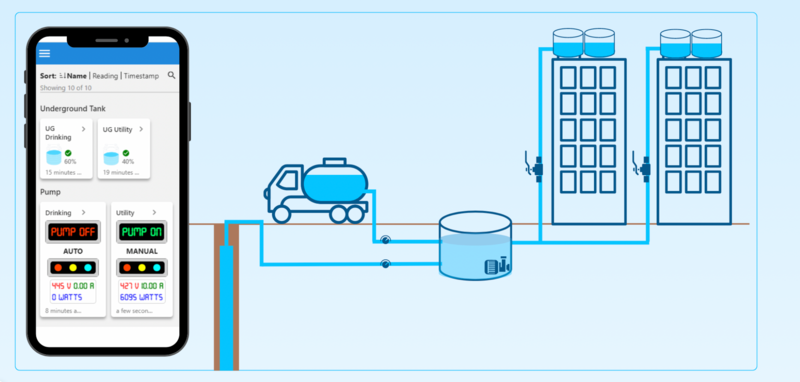The Role of IoT in Water Management Systems in 2025
Published on by Shibani Thakur, waterapp2021@gmail.com in Technology
Many fields have changed since the Internet of Things (IoT) emerged. Water management is one of them. Concerns about water quality and Availability are growing. IoT devices offer new ways to monitor and control water volume and quality successfully by Water Management App. This integration makes things more efficient and encourages good habits for the environment.

Understanding Water Management Challenges
Water management has many problems, such as wasteful use, pollution, and the inability to monitor supplies in real-time. Traditional methods often use manual processes, which can make it take longer to fix problems like leaks or pollution. IoT devices can fill in these gaps and give you fast information to help you make better decisions.
The Role of IoT Devices in Water Volume Regulation
Smart meters and automatic control systems made possible by IoT devices can make it much easier to control the amount of water that flows. Smart Water Technology has sensors that track how much water is being used in real time and give thorough information about it. This data helps utility companies, and customers understand patterns in usage and spot outliers that could mean leaks or wasted energy.
IoT monitors soil moisture and temperature to optimize agricultural irrigation. Smart irrigation systems time plant irrigation with real-time data. This saves water and improves crop growth, showing how technology can make the best use of resources.
Enhancing Water Quality Monitoring
Water quality is an important part of managing water because it affects both people's health and the long-term health of the world. Internet of Things (IoT) devices with sensors can constantly check for heavy metals, germs, turbidity, dissolved oxygen, and fluctuating pH levels. This real-time monitoring by Water Technology lets people respond right away to changes in quality so they can act quickly to reduce any health risks that might be present.
For example, smart systems that check water quality by Water Management App can let the right people know if the amount of contamination goes above what is considered safe. This proactive method ensures that problems with water quality are fixed before they get worse, protecting public health and keeping aquatic ecosystems alive.
Data Analytics for Informed Decision-Making
Advanced analytics and machine learning techniques can be used to look at IoT devices' data. By analyzing both previous and real-time data, businesses can find patterns and guess what water needs or quality problems might happen in the future. This ability to predict the future benefits urban planners and water resource managers. It helps them make intelligent choices about where to spend on infrastructure and how often to maintain it.
Data analytics can also help with methods for managing demand. By knowing when and how much water people use, utilities can set up dynamic pricing models that encourage people to use water during off-peak hours. This makes the water supply less stressed during busy times.
Integration with Smart Cities
Using Water Technology to handle water is a natural extension of the idea of smart cities. As cities become more extensive and complicated, they need better ways to handle their resources. IoT-enabled water systems can talk to other parts of a city's infrastructure, like energy and garbage management systems, to best use all of its resources. For instance, information from water management systems can help wastewater treatment plants figure out how to use energy more efficiently, leading to more environmentally friendly practices everywhere.
Mobile apps that give people real-time details about how much and what kind of water they are using also improve public participation. This openness not only encourages smart use but also builds trust between the community and energy companies.
Conclusion
IoT devices controlling water quality and amount present a considerable chance to change how water is managed. Using real-time data and advanced analytics, stakeholders can make choices that are good for sustainability, efficiency, and public health. As technology keeps improving, Water Management App will have even more chances to change how water is managed, making water systems more innovative and durable for future generations. Adopting these new ideas is necessary to solve the urgent problems of water quality and lack in a world with fewer and fewer resources.
Taxonomy
- Water Management